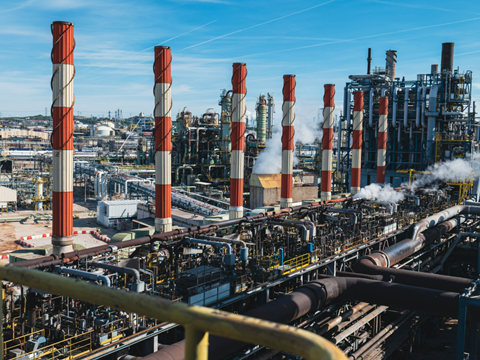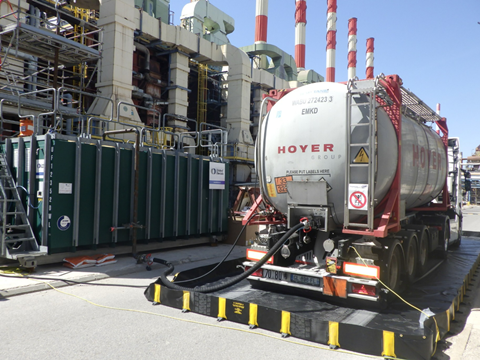
INEOS Olefins & Polymers in Lavera, France, has received the first deliveries of pyrolysis oil, a feedstock made from recycling plastic waste which will be used to manufacture recycled polymers.
The company hopes this will help its customers to meet the EU requirements for food contact, medical and sensitive plastic packaging to have a minimum of 10% recycled content by 2030. INEOS says the new grades will help satisfy EU regulatory requirements for other demanding applications such as caps and closures, milk bottles, and water pipes.
Part of the Lavera cracker had to be adapted to enable production of these materials from renewable naphtha made from sources such as biomass, organic waste or recycled materials, alongside traditional feedstocks. The pyrolysis oil is made in Europe from post-consumer plastic packaging waste that cannot be processed by mechanical recycling.

The pyrolysis oil will be used in the cracker to make recycled ethylene and propylene for conversion into virgin-quality, recycled polyethylene and polypropylene in the INEOS polymer plants located in Lavera and Sarralbe (France), and Rosignano (Italy). Apparently, the renewable nature of these products has been independently certified under the International Sustainability and Carbon Certification scheme (ISCC PLUS).
In related news, KINGFA’s Environmental SCI & TECH Spain subsidiary announced the opening of its Montalbo chemical recycling facility in February. Expected to reach an annual capacity of 30,000 tons of ‘high-performance’ recycled plastics and bolster Spain’s plastic waste recycling system, KINGFA aims to expand its presence on the European market in the areas of plastic waste recycling, life cycle management, and low-carbon material solutions.
The following month, Agilyx launched Plastyx Ltd. in collaboration with Plastic Energy founder Carlos Monreal, designed to source and supply feedstock for Europe’s advanced plastic recycling market. Plastyx seeks to develop partnerships and material processing capabilities to ensure a reliable supply of high-quality polymers for food-grade and other high-performance packaging applications.
If you liked this story, you might also enjoy:
The ultimate guide to the Packaging and Packaging Waste Regulation in 2025
How are the top brands progressing on packaging sustainability?
Everything you need to know about global packaging sustainability regulation in 2025
The key to increasing the use of reusable packaging in supermarkets


















No comments yet